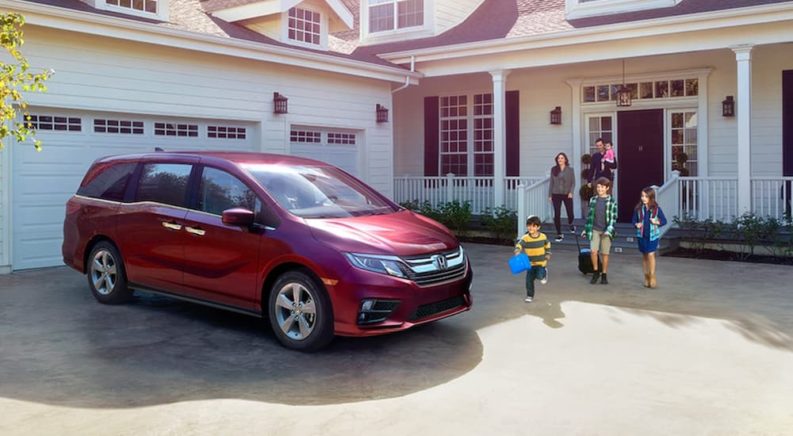When it comes to reliability and great performance, Honda is one of the best brands on the road, with a lot to offer and decades of happy and loyal customers. Like any other major automotive manufacturer, Honda covers its vehicles with warranty protection that you can take advantage of when it comes time for service. Before you head to your local dealer for Honda service, however, it’s important that you understand what your warranty coverage is and how best to take advantage of it.
Today, I’m going to take you through the basics of general Honda warranty coverage and how to ensure your vehicle stays covered. If you have questions about your specific vehicle’s warranty and protection, then you can check the warranty documents that came with your owner’s manual when you bought your vehicle. In the off-chance that you’ve lost this paperwork, you can look up your make and model on the Honda website to see what your warranty coverage started off as and get a sense of if you’re still protected or not. Now, let’s take a look at what kind of protection Honda offers and how you can use that when you need service for your vehicle.
Basic Honda Warranty Coverage
Honda vehicles actually come with quite a few warranties, though many of them are very specific. For example, Honda vehicles feature a 15-year or 150,000-mile seat belt warranty, which the vast majority of people will never need to worry about. Similarly, there’s a 5-year rust perforation warranty that covers extensive rust damage. For most drivers, however, the two warranties that are likely to be of utmost importance are the new vehicle and powertrain warranties:
- New Vehicle Limited Warranty – 3 years or 36,000 miles of coverage
- Powertrain Limited Warranty – 5 years or 60,000 miles of coverage
If you’re familiar with vehicle warranties, then you’ll probably recognize these mileages and time frames as being pretty standard within the industry. When figuring out the limits on warranties, the vast majority of manufacturers estimate about 12,000 miles each year of driving; hence the limits found here. This is important since some people are going to drive a lot more than others; if you use a Honda for making deliveries or as a ride-share service provider, then you’ll hit your mileage caps a lot sooner than someone who works from home and only runs errands every other week.
This brings me to one of the most important notes about this warranty coverage––and essentially any vehicle warranty coverage: these limits are based on whichever comes first. In other words, you have up to three years of New Vehicle Limited Warranty coverage, or up to 36,000 miles, whichever comes first. Again, if you’re a delivery driver, then it’s possible you’ll hit 36,000 miles well before three years have passed, so it’s important to keep an eye on your Honda’s mileage and act accordingly. If you’re at 34,000 miles and something starts feeling off when you’re driving, then don’t wait to take it to a Honda dealer.

What’s Not Covered?
Most warranty coverage sounds great since it gives you quite a lot of use with various parts covered by the manufacturer. According to Honda’s warranty documentation, “All repairs/replacements made under this warranty are free of charge.” The catch (isn’t there always one?) is that there are some important exceptions to these warranties, especially the New Vehicle Limited Warranty, which covers essentially every part of the vehicle other than the tires.
The biggest exclusion to pretty much all automotive warranty coverage is what Honda refers to as “normal wear or deterioration of any part,” as well as “expendable maintenance items (such as filters or brake pads) when replaced due to normal wear or customer abuse.” In other words, if your brake pads need to be replaced because they’re worn down within what’s considered a normal timeframe, then that’s not covered by the warranty. Essentially, warranty coverage is there for things that break down or need to be replaced sooner than expected.
Just as important is that all of Honda’s warranties include a general provision that indicates they don’t cover “failure of any part or accessory due to: abuse, misuse, accidental damage, or…improper installation or maintenance.” In other words, if your alignment is thrown off because you drove up on a curb, then the warranty probably won’t cover the alignment work since it’s due to accidental damage. Similarly, if you try to work on your Honda yourself and make a mistake on a repair or installing a replacement part, then the work needed to fix that error would similarly not be covered. See why this is so important?
How to Maintain Your Coverage
One of the most important things you can do to maintain the warranty protection on your Honda is to follow the service schedule for your vehicle. This includes simple things like checking your fluid levels and tire condition regularly, as well as going in for routine oil changes and other services on a schedule. Some of this stuff you can do yourself––an oil change is pretty easy––but it’s vital that you have some kind of proof that the work was done. Anytime you need work done under warranty, they’ll want to see your service records.
If your records show that your vehicle hasn’t had its oil changed in two years, for example, then a Honda dealer can consider it abuse or misuse due to neglecting the service schedule and refuse to cover the work under warranty. If this happens, there’s a process for disputing the decision, but it’s a whole ordeal and certainly not guaranteed to be resolved in a way that is ultimately satisfactory for you. This is why it’s so important to have work done by people who really know what they’re doing and to have a record of when everything was handled, so you can show that your vehicle was properly cared for.

What Does This Mean for Service?
Like it or not, while your vehicle is under warranty, it may be best to have a certified service center or dealership handle maintenance and repairs on it in order to ensure your vehicle remains covered by your warranty. A Honda dealer service center is also where you’ll need to go for any work that’s covered by the warranty, so you’re best off finding a location near you and getting to know them anyways. Fortunately, Honda’s warranty paperwork does indicate that you can perform scheduled maintenance on your vehicle if you know what you’re doing, but they suggest you make “a statement that you completed the maintenance yourself, showing the odometer mileage and date you did the work. Receipts for replacement parts should accompany this.”
Of course, once your warranty coverage expires, then you don’t have to worry as much about keeping these kinds of records since you won’t have any work covered anyways. Service records from a mechanic, or your own, are still important if you ever want to sell your vehicle, either privately or to a car dealership since they’ll show that you’ve taken good care of it. At the end of the day, taking proper care of your Honda is the best way to get the most from it, to ensure it stays covered by your warranty and that it retains as much value as possible when you’re ready to sell it.

